This map allows you to check how each municipality across Spain voted. The map shows reveals that Vox have gained in the Madrid region, Murcia and pockest across the scarsely populated interior as well as in towns in rural Andalusia.
The Spanish socialist party won the share of the vote in 3,460 municipalities across Spain. The PP won 2,860 while Vox won 278.
In Catalonia, the ERC won 584 Catalan municipalities more than double that of JxCat (the party of the exiled Carles Puigdemont). The more radical CUP, won 50 municipalities.
In the Basque Country the vote was split between two Basque parties, EH Blidu, which won 183 municipalities and the PNV which won 153.
In neighbouring Navarra, Navarra Suma won 106 municpalities and in Teruel, the newly formed ¡Teruel Existe! took the biggest share winning 39 municipalities.
The following maps shows the dramatic change in how Spain voted on November 10th compared to the last election in April and the previous one in June 2016 revealing how Spain has lurched from blue to red and then became more fractured and with the growth of regional parties and of Vox.
The map on the bottom left from 2016 shows that the PP won the most votes in most of the provinces apart from the Basque and Catalan regions and some of Andalusia. Whereas on the right from April shows the red of the PSOE is the dominant colour. While the one below shows Sunday's vote and how the PP are regaining ground plus the emergence of Vox as the largest party in Murcia.
2016 April 28th 2019
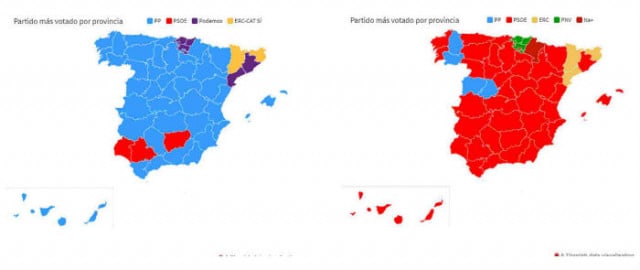
November 10th, 2019:
The PP has made gains in Galicia, Castille-Leon and Cantabria, while the new Teruel Existe party became the most voted in the Teruel province and Vox took the largest share of the vote in Murcia.
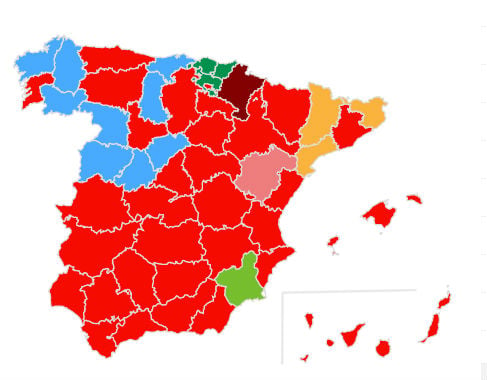
Maps source: Ministerio Interior
Now let's take a look at Murcia where Vox took the lion's share of the votes.
#MurciaQuéFachaEres. Éste es el mapa de la Región de #Murcia. Vox se ha impuesto sobre todo en el área del Campo de Cartagena. Mar Menor, Corredor Mediterráneo, falta de agua, sensación de centralismo y abandono… generan voto anti-PSOE y anti-PP. Fuente: https://t.co/Kgewp0vQoT pic.twitter.com/NYYMHfN66L
— Antonio Marcelo (@antoniombeltran) November 11, 2019
The following maps published in a tweet by online newspaper El Diario reveal in colour where parties have gained in support and in various shades of grey to black where they have lost votes. It's a black day for Ciudadanos.
? MAPAS | Así sube o baja cada partido entre el 28A y el 10N, por provincias https://t.co/mzLpdeZEo1 #eleccionesgenerales10N pic.twitter.com/vcIA7WFEUW
— eldiario.es (@eldiarioes) November 10, 2019
El Pais have developed this interactive map to show exactly how Spain voted, street by street, allowing you to find out how your neighbours voted.
How did your neighbors vote in the November 10 election in Spain? Look up your zipcode on this interactive map from @el_pais to find out what political party won the most support in your area – and whether this changed since the April poll https://t.co/dSVhYzmMr9
— El País in English (@elpaisinenglish) November 12, 2019
READ MORE:

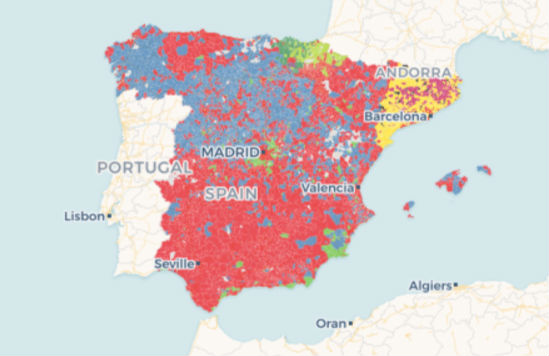
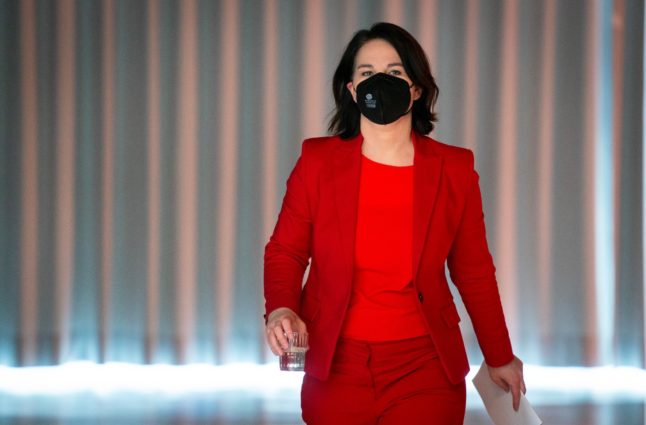
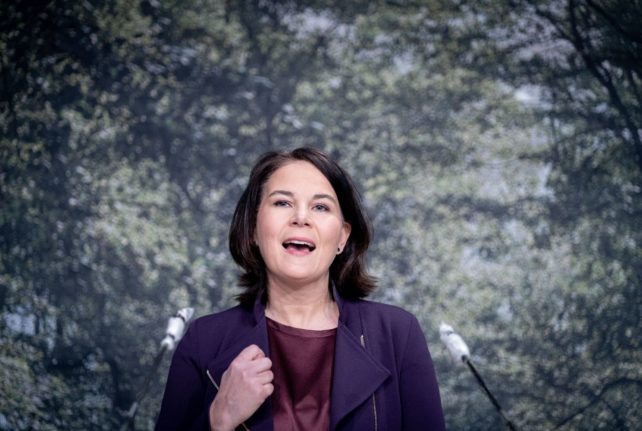
 Please whitelist us to continue reading.
Please whitelist us to continue reading.
Member comments